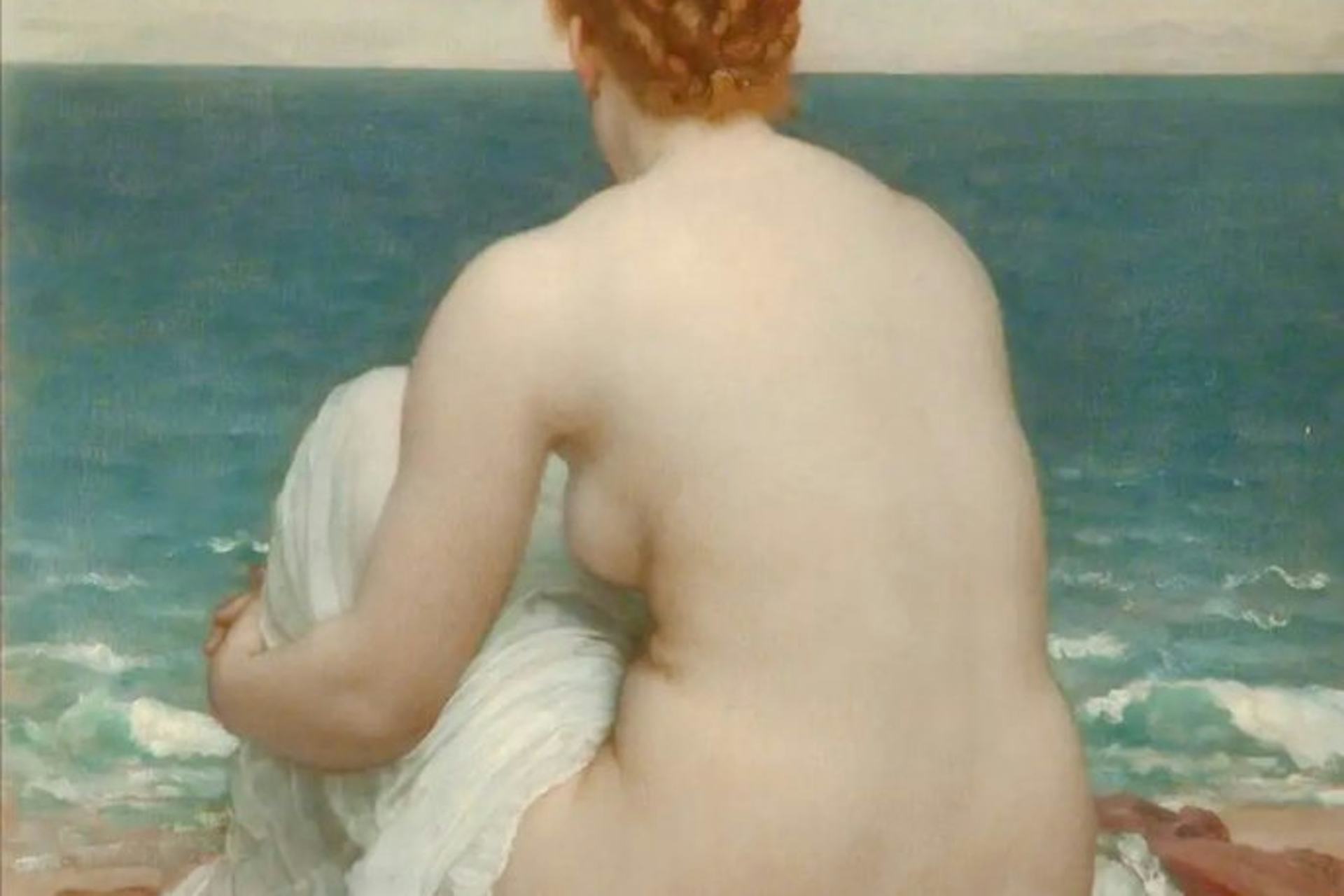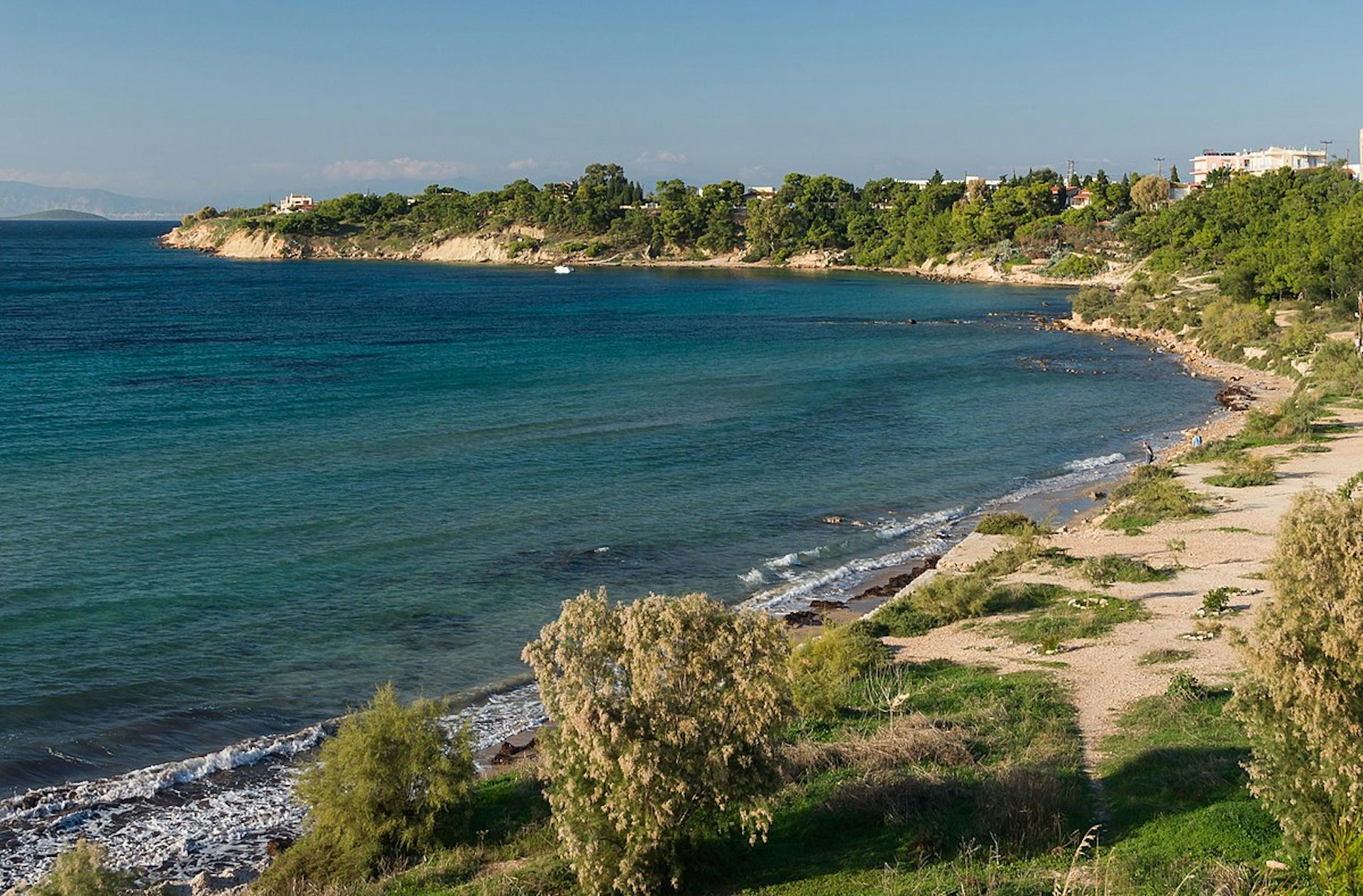Psamathe

Psamathe by Frederic Leigthon (1880)
Lady Lever Art Gallery, Port SunlightPublic DomainOverview
Psamathe, daughter of Nereus and Doris, was one of the fifty sea nymphs known as the Nereids. In her most famous myth, the beautiful Psamathe caught the eye of Aeacus, king of the island of Aegina. She tried to escape his advances by turning herself into a seal, but he was undeterred and made love to her anyway.
From this union Psamathe bore a son, Phocus, who was later killed by his jealous half-brothers. Psamathe then married Proteus (either a sea god or an Egyptian king) and gave him two children, named Eido (or Theonoe) and Theoclymenus.
Etymology
The name “Psamathe” (Greek Ψαμάθη, translit. Psamáthē) seems to be derived from the Greek word ψάμμος (psámmos), meaning “sand.” It can thus be translated as “the sandy one” or “sandy goddess”—a suitable name, considering her association with the sea.
Pronunciation
English
Greek
Psamathe Ψαμάθη (Psamáthē) Phonetic
IPA
[PSA-muh-thee] /ˈpsæ mə θi/
Titles and Epithets
Psamathe was frequently referred to as a “Nereid” (Νηρηΐς, Nērēḯs), a simple patronymic meaning “daughter of Nereus.”
Attributes
Like all Nereids, Psamathe was represented as a beautiful, immortal sea nymph. She lived with her sisters in her father Nereus’ magnificent underwater palace.
Psamathe had the power to change her shape at will, much like her father Nereus and the sea god Proteus—a power she used in her failed attempt to evade the lustful Aeacus.
From the fifth century BCE onwards, Psamathe sometimes appeared in ancient art alongside the other Nereids. She was invariably shown as an attractive young female, usually clothed in a traditional robe. However, these representations tended to be rather generic; indeed, she could only be distinguished from her sisters if the artist inscribed her name.[1]
Family
Psamathe’s father was Nereus, the sea god known as the “Old Man of the Sea,” who was a child of Gaia and Pontus. Her mother was Doris, one of the three thousand Oceanids born to the Titans Oceanus and Tethys.[2]
Psamathe and her forty-nine sisters were collectively known as the “Nereids,” after their father Nereus. According to one source, they also had a brother named Nerites, a handsome companion of Poseidon.[3]
Psamathe had two consorts. The first was Aeacus, the king of Aegina, who raped Psamathe and had a son with her named Phocus.[4] The second was Proteus, a mysterious figure associated with Egypt, with whom she had two children: a prophetic daughter named Eido (but also called Theonoe) and a son named Theoclymenus.[5]
Mythology
Sealing the Deal: Aeacus and Phocus
Psamathe’s main myth tells of how she was pursued by Aeacus—one of Zeus’ mortal sons and the king of the island of Aegina (about 17 miles from Athens). But Psamathe was uninterested in Aeacus’ attentions and tried to escape him by transforming herself into a seal. Undeterred, Aeacus raped her anyway.
Psamathe bore Aeacus a son, whom she named Phocus, meaning “seal” (apparently as a reminder of the child’s strange and unpleasant conception).[6]

Photo of the coastline of Aegina in Greece, the island of King Aeacus
JebulonPublic DomainAeacus raised Phocus in Aegina, where he doted on the boy and treated him as his favorite. This inspired the jealousy of Phocus’ half-brothers Peleus and Telamon, Aeacus’ sons by his wife Endeïs. Together, the duo murdered Phocus (the exact details of this murder vary across ancient sources, and some authors have even suggested that Phocus’ death was an accident).
Aeacus was furious when he discovered that Peleus and Telamon had killed his favorite son. To punish them, he exiled the boys from Aegina. But Psamathe’s punishment was even worse: she sent a vicious wolf to ravage Peleus’ herds. In the end, Thetis—Peleus’ wife and Psamathe’s own sister—convinced Psamathe to forgive Peleus and turn the wolf to stone.[7]
Psamathe in Egypt
According to Euripides, Psamathe eventually made her way to Egypt. There, she married the king of the land, a kindly man named Proteus (though in other traditions, Proteus was a sea god).
Psamathe bore Proteus two children: a daughter named Eido (but more commonly called Theonoe), who was a powerful prophetess and priestess, and a son named Theoclymenus, who succeeded his father as king of Egypt.[8]
Worship
Psamathe did not possess any independent cult. However, she was honored as a goddess together with the other Nereids, who were worshipped throughout the ancient world.[9]